
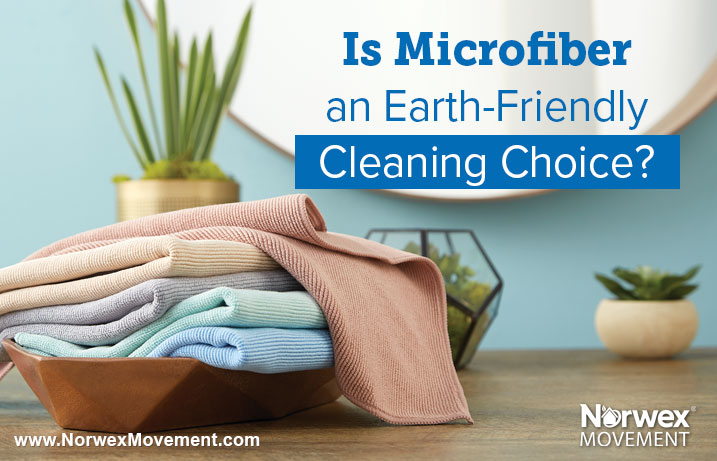
As an outdoorsy girl from Colorado, I’m passionate about our environment and minimizing our impact to it. One issue that I’ve been tracking for quite some time now is the topic of microplastic pollution. It’s a big problem and that’s why I want to spend some time talking about it here, especially in light of Norwex products.
Hard to believe, but tiny little plastic pieces that are less than 5 millimeters in length are a bigger concern to our water pollution problem than larger plastic pieces like buoys, water bottles and plastic toys. In fact, an estimated 94% of the 1.8 trillion pieces of plastic in the Great Pacific Garbage Patch is microplastic according to National Geographic.
Here’s what I can tell you. While research is ongoing, environmental microplastic seems to come from a variety of sources, including:
Biofuels Digest estimates that as much as 35% of microplastic pollution comes from synthetic clothing during the wash cycle. And most of this microplastic comes from clothes made of acrylic, nylon and polyester, with more loosely woven items shedding the most, according to one study.
The fact that I even get asked this question makes my heart happy because it means that people are becoming more educated about the topic and the impact of microplastics on our environment.
So here’s the short answer…because Norwex Microfiber is made from polyester and polyamide (both synthetic materials), any breakdown of these materials in the wash can cause it to shed.
When I first started learning more about this topic, I wanted to find out just how much our Norwex Microfiber shed. And here’s some good news! Because Norwex Microfiber is so tightly woven it actually sheds very little.
In fact, testing shows that after 200 washings an EnviroCloth® loses only .026 of an ounce. That’s less than the size of a plain M&M (or so I’m told)!
When compared with the weight of the plastic packaging of most typical cleaning products, Norwex Microfiber is a much more sustainable option.
Even with minimal shedding, cleaning with Norwex Microfiber and water helps avoid some of the main environmental and health concerns that come with traditional cleaning methods. Just to name a few:
Cotton cloths/rags:
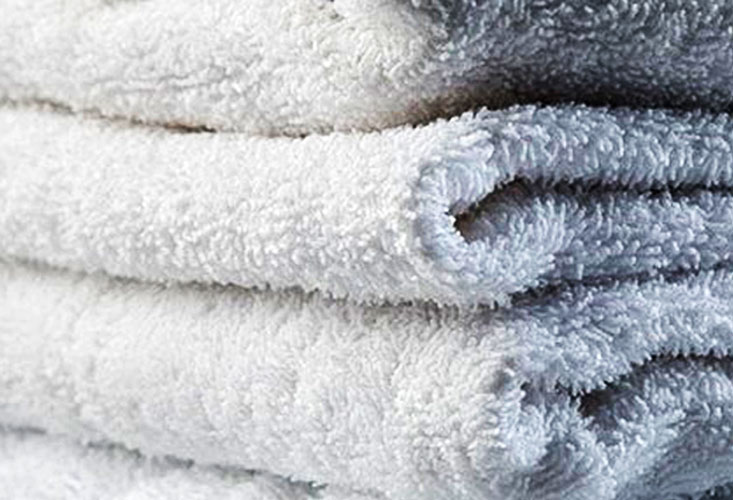 Sadly, more chemical pesticides are used for traditionally grown cotton than any other crop. This not only pollutes the fibers themselves but also the groundwater runoff, streams, rivers, lakes and oceans that these chemicals wash into.
Sadly, more chemical pesticides are used for traditionally grown cotton than any other crop. This not only pollutes the fibers themselves but also the groundwater runoff, streams, rivers, lakes and oceans that these chemicals wash into.
Paper towels:
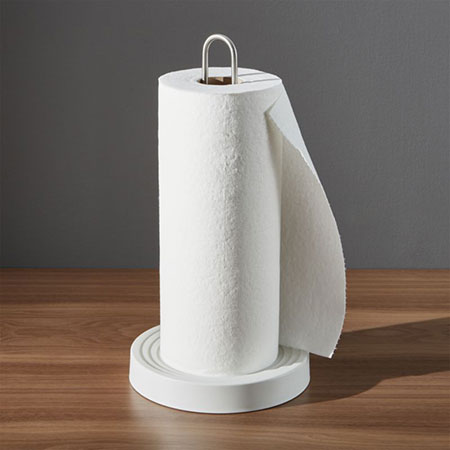 Because of our paper towel usage in North America, over 50,000 trees are cut down daily and that contributes to an estimated 3,000 tons of waste a day. To make matters worse, the pulp and paper industry is the largest industrial user of water, and typical paper towels are manufactured using chlorine, which is a known toxin.
Because of our paper towel usage in North America, over 50,000 trees are cut down daily and that contributes to an estimated 3,000 tons of waste a day. To make matters worse, the pulp and paper industry is the largest industrial user of water, and typical paper towels are manufactured using chlorine, which is a known toxin.
Disinfectant wipes:
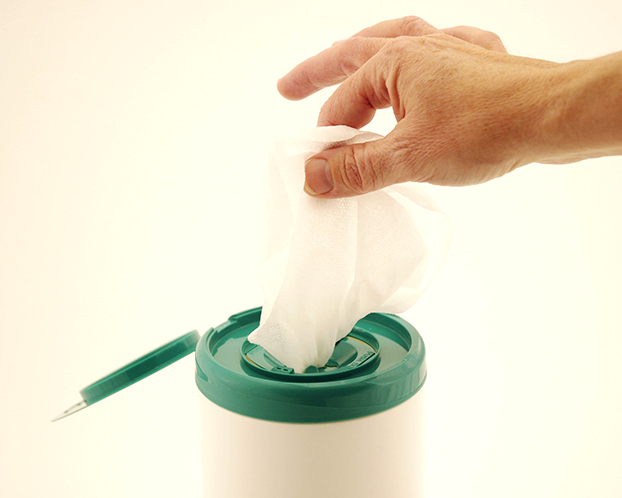 These are also known as wet wipes and often contain chemicals that can cause skin reactions, headaches, and eye and throat irritation. These one-use wipes are also very slow to break down, and even “flushable” wipes can linger for years in sewers and oceans.
These are also known as wet wipes and often contain chemicals that can cause skin reactions, headaches, and eye and throat irritation. These one-use wipes are also very slow to break down, and even “flushable” wipes can linger for years in sewers and oceans.
Chemical cleaners used with cotton and paper towels:
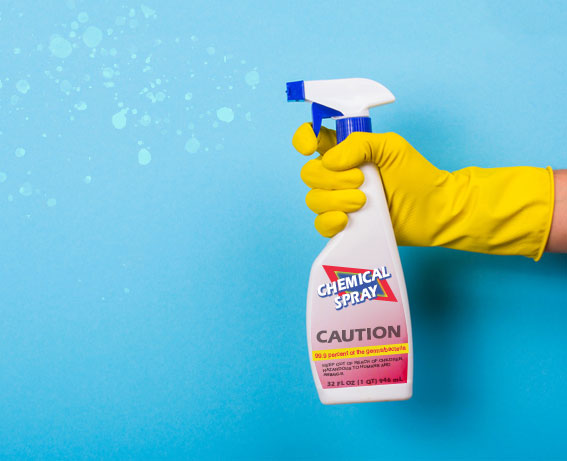 Unfortunately, harmful chemicals in traditional cleaning products impact health and pollute indoor and outdoor environments. Not to mention paper towels, which waste precious resources and overburden landfills.
Unfortunately, harmful chemicals in traditional cleaning products impact health and pollute indoor and outdoor environments. Not to mention paper towels, which waste precious resources and overburden landfills.
Here are a few ways…
I am so grateful that safe, sustainable products are important to you. Together, we can turn back the hands of time and make our planet greener for our families and for generations to come.
Resources:
“Sadly, more chemical pesticides are used for traditionally grown cotton than any other crop. This not only pollutes the fibers themselves but also the groundwater runoff, streams, rivers, lakes and oceans that these chemicals wash into.”
Wow!!! I had no idea … unbelievable
Yes, this was an eye-opener for me as well! This inspires me to think more carefully about the clothes I buy and how they’re sourced.
Thank you SO much for sharing this!! Some very surprising and eye opening information here for sure.
YES! Norwex is always the right choice for inside the home and the environment. Our choices have lasting effects, so we have to be informed consumers. Thank you Norwex for doing an excellent job at educating us and offering solutions. Not all microfiber is made the same way, and the finished products can vary greatly. Norwex is the best quality!
May I suggest some additions? 1. Your #4 point would be a good one to add to the Shedding section above, since I’m guessing a lot of people may cut and paste that section, and less washing is key to less shedding. 2. I’d read that Norwex microfibre sheds less because it is made from one long strand vs. many small ones – if that’s true, it would be another good addition. 3. It would also be helpful to add a comparison about how much is shed by other products, to provide context – for example, how much does cheaper microfibre shed? It’s hard to know what’s a lot or what’s a little otherwise.
Love these suggestions, Karin! 🙂
Yes!!! I thought exactly the same… I’m actually searching for an article on cheap microfiber vs. Norwex
I’d like to see, know this too.
I watched the webinar on this just yesterday and it was so insightful. Bringing my attention to things I didn’t even know about! Thank you!!
Glad you found it helpful, Courtney! It’s an interesting topic, and one we will continue to watch for sure.
Always appreciate being armed with helpful information to increase customer awareness- thank you!
Thanks for sharing this information. It’s good to know.
Interesting. I was hoping that due to the extra quality and price that this would be the case regarding shedding.
I am new to Norwex but my mother loves it and just purchased the eye glass cloth. I used some of the products she had and I will be purchasing more items.
This is why Amy Cadora is my [super] hero. #FanGirl
I’ve always wanted to minimize my impact on the environment. I’m glad to know that Norwex products shed very little so I’ll buy them if I find some online. I think buying Norwex is a good choice since paper towels don’t save on trees so I’ll consider it.
I love that norwex is a company we can trust and the science just keeps backing that up!
Great article! I have learned allot. Being new to Norwex, I am learning more and more every day. I wish I would have known some of these things years ago. Very eye opening.
This is great information because I have some customers that are worried about this problem.
Wow! I never knew about the material breakdown or the length a flushable towel takes to breakdown. I feel rather guilty for the amount of wipes and paper towels I go through.
I had no idea cotton is treated with so many pesticides! Really makes you think when you go to purchase clothing. Love learning new facts about our Norwex Microfibre. Good stat on how much it actually does shed.
I just heard about Norwex and my first Google search was on shedding. I’m so happy to see how you’re addressing it!! Thank you! One recommendation – you can reduce the impact of the already small amount of shedding by using a Guppy Bag when washing them!
Is this Microfibre Recycling Program available in Canada?
Hi Heather, thanks for your question. Yes, the Norwex Microfiber Recycling Program is available in Canada. You may log onto your Consultant Office and go to Resources > Product Information > Microfiber Recycling Program to learn more and to download a mailing label to use to send in your used microfiber. Thank you!
Thank you for the great info. I was told by a friend that microfibers contribute to the polluting of the environment. I am so glad that Norwex products shed very little and are by far the better earth-friendly cleaning choice.
I don’t understand what you mean by “ With our ongoing innovation plans, several of our most popular microfiber products are now made of up to 70% recycled materials. Which means that anywhere from 2 to 5 plastic bottles are reused in these products when they are manufactured.” I don’t understand how the plastic bottles and microfiber are related. Are you saying that microfibers replace 2 to 5 plastic bottles?
Lizz, thanks for your question. Some Norwex Microfiber is created from up to 70% recycled materials. In the case of our EnviroCloth for example, this means that the equivalent of two 500-ml plastic bottles are used to create each cloth.
Norwex microfiber is made from (a blend of) polyester and polyamide. These two synthetic textile materials are made from petroleum-based plastic polymers. In other words, they are made out of plastic, thus the connection between plastic bottles and microfiber. As plastics, microfibers are nonbiodegradable, which is why it is important to recycle them at the end of their life. There are also other considerations to be aware of, in regards to the environmental impact of the manufacturing of polyester and polyamide. These two articles may be helpful as background knowledge/education:
(polyamide) https://www.panaprium.com/blogs/i/polyamide-fabric
(polyester) https://barnhardtcotton.net/blog/know-fibers-difference-between-polyester-and-cotton/
Do any of you have the washing instructions for the clothes .I’ve had my clothes for glass a long time & have lost the washing instructions could any one of you help me out?
Hi Karletta, we copied this from one of our product information sheets. Hope it helps!
Slightly dirty microfiber can be washed with Norwex Dishwashing Liquid under warm running water and used again before laundering. Rinse thoroughly after washing and air or machine dry.
• Cloths that have been used heavily should be laundered using a Norwex laundry detergent, which contains no fillers, after each use.
• For tough stains, pre-treat with Stain Remover or use Microfiber Cleaner Laundry Booster.
• Do not use bleach, fabric softeners or dryer sheets.
• Launder dark colors separately.
Are the materials used for Notwex products earth friendly? What happens to an overly used Norwex product? Will it decompose later on or will it pile up in the landfill like any other non-compostable garbage?
Thanks for your question. Norwex is ever-vigilant in our quest for better and better products that will further our Mission of improving quality of life by radically reducing chemicals in our homes. Our microfiber is the finest available on the market today. Extremely durable and long-lasting, it helps cut back on the 13 billion pounds of paper towel waste created in the U.S. every year. Many of our microfiber products are also made from recycled materials. See our blog, 7 Reasons to Try Microfiber Made from Recycled Plastic at https://www.norwexmovement.com/microfiber-from-recycled-plastic/ to learn more. We also encourage everyone to make full use of our Microfiber Recycling Program. Details are available at http://www.Norwex.biz. As new technology is developed, we will continue to analyze it for its environmental impact as well as its effectiveness, always ensuring we deliver only the best for our Consultants, their Customers and our planet.
Anything we can learn about saving our trees, and cleaning up our environment will benefit all of us, and future generations. This was very informative.
If everyone in the world used Norwex there would still be a plastic pollution problem as it breaks down once it’s lifetime use is over & when it is washed. So for me, this isn’t an option. We have to stop using plastic. Full stop. Plastic takes decades to hundreds of years to break down; & we are leaving a legacy that is causing many species to unknowingly ingest it & feed it to their young (in birds & aquatic animals). 1 m&m broken into microscopic pieces is huge! I love your philosophy but please produce something without plastic.
Jenny, thanks so much for your comment. We applaud your passion for completely stopping the use of plastic, and we echo your hope that we become a completely plastic-free society within the foreseeable future. Meanwhile, we believe that the tiny amount that microfiber may shed outweighs any drawbacks in light of the waste of paper towels and the impact of harmful chemicals in our homes and waterways. That said, as new technology is developed, we will continue to analyze it for its environmental impact as well as its effectiveness, to ensure we continue to deliver only the best for our Consultants, their Customers and our planet.
are these products made in the US?
Jill, thank you for your question. Our microfiber products are created in our China facility, which Norwex owns. Many of our other products are manufactured in the US and other countries.
My concern is the silver content of the microfiber. Silver is a precious metal and its use makes the Norwex microfiber more expensive and resource intensive. Additionally, silver is toxic, which is why it is used in the Norwex microfiber as an antibacterial agent, a marketing point for the Norwex microfiber. At high enough concentrations per the US Toxicity Characteristic Leaching Procedure (TCLP) test, silver content can make the material a hazardous waste. The TCLP limit for silver is 5 mg/l, per US EPA regulations. Per Norwex, the microfiber can be recycled using an energy recovery process, which collects the metals using magnets; however, silver is not magnetic and based on the video of the energy recovery process, would likely end up in the ash. The end of life disposition of the ash was not identified in the video. Another observation is this website indicates microfiber cloths are produced in China, thus incurring shipping costs, emissions, and other environmental impacts etc. accompanying distribution to all Norwex’ customers. In light of these observations, I think there are significant opportunities for improvement… Read more »
Jo, thank you for your thoughtful inquiry. Each of our quality products is designed to be used for years and manufactured to take into account sustainability and other impacts. For example, we use up to 70% recycled microfiber yarn in many of our Norwex Microfiber products, and used microfiber products that are returned to us are converted into energy. Additionally, many of our core microfiber products have just received STANDARD 100 by OEKO-TEX® certification substantiating they are free from harmful chemicals. We are also continually working to ensure that our products are excellent as well as sustainable—and that will always be a focus for us.
I noticed that in your reply to Jo, you did not address two of the specific points that s/he made: 1) “Per Norwex, the microfiber can be recycled using an energy recovery process, which collects the metals using magnets; however, silver is not magnetic and based on the video of the energy recovery process, would likely end up in the ash. The end of life disposition of the ash was not identified in the video.” And 2) “Some companies perform life cycle analyses on their products from raw material extraction through end of life disposition to look at the sustainability impacts throughout the entire product life cycle.”
Norwex has yet to publish an article or a study detailing this kind of analysis in any detail. Rather than give a generic response, perhaps Norwex could commit to doing such an analysis as soon as possible and making it public?
Zoe, thank you so much for your in-depth comments. The video you refer to on our site is there to give an idea of the general process of how a wide variety of materials can be converted into energy, not simply microfiber. The statement “Supports recycling through the recovery of metals” is not an indication that we are using a magnetic field recovery process for silver. In recycling facilities that have metal recovery programs, silver is typically recovered by electrolytic methods as the silver ion is charged. Please note that silver has a history of use and has very low inherent toxicity. Silver is not categorized toxic to human health in the quantities used in Norwex textile technology. Silver is known for its antibacterial properties, which can be harnessed in the fabric to improve its self-cleansing properties, but the quantitative use as well as the innovative technology of manufacturing Norwex Microfiber with silver does not render it toxic to humans in its general usage. Silver ion release from Norwex Microfiber containing BacLock is manyfold less than the TCLP limits. In… Read more »
On the positive side for Norwex, here is something I have come accress while diving deeply into this topic (polyester/polyamide textile life cycle) that sounds promising:
“Although it is a common assumption that textiles made from natural materials such as cotton and silk are more environmentally friendly than textiles made from man-made materials, the case for polyester fibre proves this to be incorrect.
Polyester is made from petroleum, a non-renewable resource that creates damaging environmental impacts during the extraction process. *However*, when considering the whole lifecycle of the fibre, from the raw materials, through the use phase to the end of the lifecycle, polyester is not as environmentally damaging as believed. It has lower energy impacts during the washing and cleaning phase and is also completely recyclable at the end of its life.
Polyester textile recycling has been developed using the clear plastic water bottles, or PET as the raw material, a source of plastic that would otherwise go into landfill.”
More data to shore up the claims above would be helpful. Source: http://www.tedresearch.net/media/files/Polyester_Recycling.pdf
I love this about Norwex too. Working together to make a difference.
On the topic of how much microfiber sheds versus other synthetic fabrics: I just came accross this article from 2016: https://www.theguardian.com/environment/2016/jun/20/microfibers-plastic-pollution-oceans-patagonia-synthetic-clothes-microbeads “In an alarming study released Monday, researchers at the University of California at Santa Barbara found that, on average, synthetic fleece jackets release 1.7 grams of microfibers each wash. It also found that older jackets shed almost twice as many fibers as new jackets. The study was funded by outdoor clothing manufacturer Patagonia, a certified B Corp that also offers grants for environmental work.” Now we just need to compare this to the fact that Amy Cadora shared above: “testing shows that after 200 washings an EnviroCloth® loses only .026 of an ounce. That’s less than the size of a plain M&M.” The 1.7 grams for fleece jackets was per wash. So, divide 0.26 ounces by 200 washes, and we get 0.0013 Now we have to convert ounces to grams: 0.0013 ounces = 0.037 grams (rounded) So, while a fleece jacket releases 1.7 grams of microfibers each wash on average, an EnviroCloth loses only 0.037 grams, even after 200 washes. That’s… Read more »
However, if you use 2nd hand natural fibre rags with natural/ sustainable cleaners then you can have the best of both worlds!
That’s tru. But I love the way Norwex performs. I’d actually feel better about the product if it were made in the USA.
I’m sooooo very happy to read yet another reason why I love and use Norwex!
What about the petroleum that is used to create polyester?